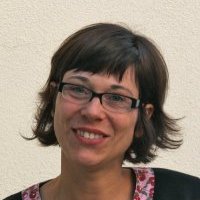- HafenCity University Hamburg, Urban & Regional Economics, Department Memberadd
Stadte bilden heute das alltagliche Lebensumfeld fur einen grosen Teil der Weltbevolkerung. Ihre physische Gestalt und soziale, kulturelle, okonomische und technische Funktionsfahigkeit beeinflussen nicht nur einzelne lokale Akteure,... more
Stadte bilden heute das alltagliche Lebensumfeld fur einen grosen Teil der Weltbevolkerung. Ihre physische Gestalt und soziale, kulturelle, okonomische und technische Funktionsfahigkeit beeinflussen nicht nur einzelne lokale Akteure, sondern wirken sich auch auf samtliche ubergeordnete Politikebenen aus. Die Entwicklung von Stadten liegt daher im Interesse vieler einzelner Beteiligten und kollektiven Akteuren aus Politik, Privatwirtschaft und Zivilgesellschaft – durchaus mit widerstreitenden Zielvorstellungen. Somit bildet Stadtentwicklung eine Arena fur kollektives soziales Handeln verschiedenster Akteure. Diese mobilisieren Ressourcen, verhandeln Interessen, bilden Allianzen und schalten gegebenenfalls Oppositionen aus, um ihre jeweiligen Zielvorstellungen durchzusetzen oder Prozesse zu blockieren.
Research Interests:
Research Interests: Sociology, Collective Behavior, Urban Planning, Collective Action, Politics, and 15 moreInteraction, Network Analysis, Urban Development, Interaktion, Macro, Empirical, Development and testing of methods, Local Politics, Netzwerkanalyse, Stadtentwicklung, Basic Research, Stadtplanung, Social Network, Grundlagenforschung, and Kommunalpolitik
Research Interests:
Various network paradigm approaches are increasing in significance in the field of social-spatial sciences. In recent times, scholars engaged in research related to spatial features have more frequently grasped and explained social... more
Various network paradigm approaches are increasing in significance in the field of social-spatial sciences. In recent times, scholars engaged in research related to spatial features have more frequently grasped and explained social structures and discourses using an analytical network perspective. A relatively young strand of Social Network Analysis (SNA) is Visual Network Research, which uses network maps to gather and analyse social relationships, mostly using participative methods. This article discusses the specific possibilities and challenges that emerge by applying a visual network perspective in socialspatial sciences. Therefore, two different tools for visual data collection are introduced by presenting exemplary case studies that discuss the processes of space constitution. Net-Map is a pen-and-paper tool and is meant to manually draw multiplex networks in cooperation with interview partners or focus groups. By doing so, qualitative and quantitative network data are collec...
Research Interests:
Bettina Lelong analysiert anhand der politischen Durchsetzung der städtebaulichen Großprojekte HafenCity (Hamburg) und Kop van Zuid (Rotterdam), welche Bedingungen den Handlungsspielraum der beteiligten Akteure beeinflussen. Mit einer... more
Bettina Lelong analysiert anhand der politischen Durchsetzung der städtebaulichen Großprojekte HafenCity (Hamburg) und Kop van Zuid (Rotterdam), welche Bedingungen den Handlungsspielraum der beteiligten Akteure beeinflussen. Mit einer netzwerktheoretisch fundierten Vierebenenanalyse ermittelt sie Erklärungsansätze für das durchsetzungsfähige kollektive Handeln der Akteure. Der Vergleich der beiden Großprojekte offenbart sowohl die Differenzen der beiden Netzwerktypen mit jeweils unterschiedlichen Handlungslogiken (exklusives bzw. inklusives Netzwerk) als auch die Gemeinsamkeiten, die in beiden Fällen als Ursachen für einen Politikwandel angesehen werden können. Dazu gehören eine selektive Netzwerkerweiterung, die Entwicklung einer neuen Wirklichkeitskonstruktion und spezifische Handlungsorientierungen von Akteuren an strategischen Netzwerkpositionen.
Der Inhalt
• Stadtpolitik aus der Perspektive der Netzwerkforschung
• Vierebenenanalyse zur Untersuchung kollektiven Handelns
• Dynamische Betrachtung von Netzwerken
• Städtebauliche Großprojekte HafenCity (Hamburg) und Kop van Zuid (Rotterdam)
• Durchsetzungshandeln im exklusiven und inklusiven Netzwerk
Der Inhalt
• Stadtpolitik aus der Perspektive der Netzwerkforschung
• Vierebenenanalyse zur Untersuchung kollektiven Handelns
• Dynamische Betrachtung von Netzwerken
• Städtebauliche Großprojekte HafenCity (Hamburg) und Kop van Zuid (Rotterdam)
• Durchsetzungshandeln im exklusiven und inklusiven Netzwerk
Cities are continuously evolving formations. Change occurs mostly incrementally, but sometimes more radical shifts transform the urban fabric. Considering the complexity of urban development processes, this paper asks for the conditions... more
Cities are continuously evolving formations. Change occurs mostly incrementally, but sometimes more radical shifts transform the urban fabric. Considering the complexity of urban development processes, this paper asks for the conditions of collective action which enable an urban policy change deviating from established planning and political perceptions and interpretations, routines and actual balances of power. To capture the structuring conditions, the paper employs Emirbayer and Goodwin’s theoretical approach (1996), which conceptualizes cultural, social-structural and social-psychological contexts of action. The paper translates their framework into a network-theoretical methodology which provides an analytical template for the exploration of two empirical case studies. The paper outlines a multilevel analysis and discusses the qualitative network reconstruction and a frame analysis. Interpreting the findings of the political implementation processes of two waterfront redevelopments, it can be assumed that strategic networks of interdependent but loosely coupled actors aspired to overcome hegemonic network domains. The analysis reveals two types of networks, which show an exclusive and an inclusive logic of action respectively. Apart from this general distinction, both cases indicate certain supportive conditions which helped to consolidate the new urban development schemes. Regarding the methodology, it can be concluded that the integrated analysis of actor configurations, cultural frames and social-psychological conditions allowed for an encompassing analysis and helped to discern a variety of constraining and enabling conditions on human agency in urban politics.
